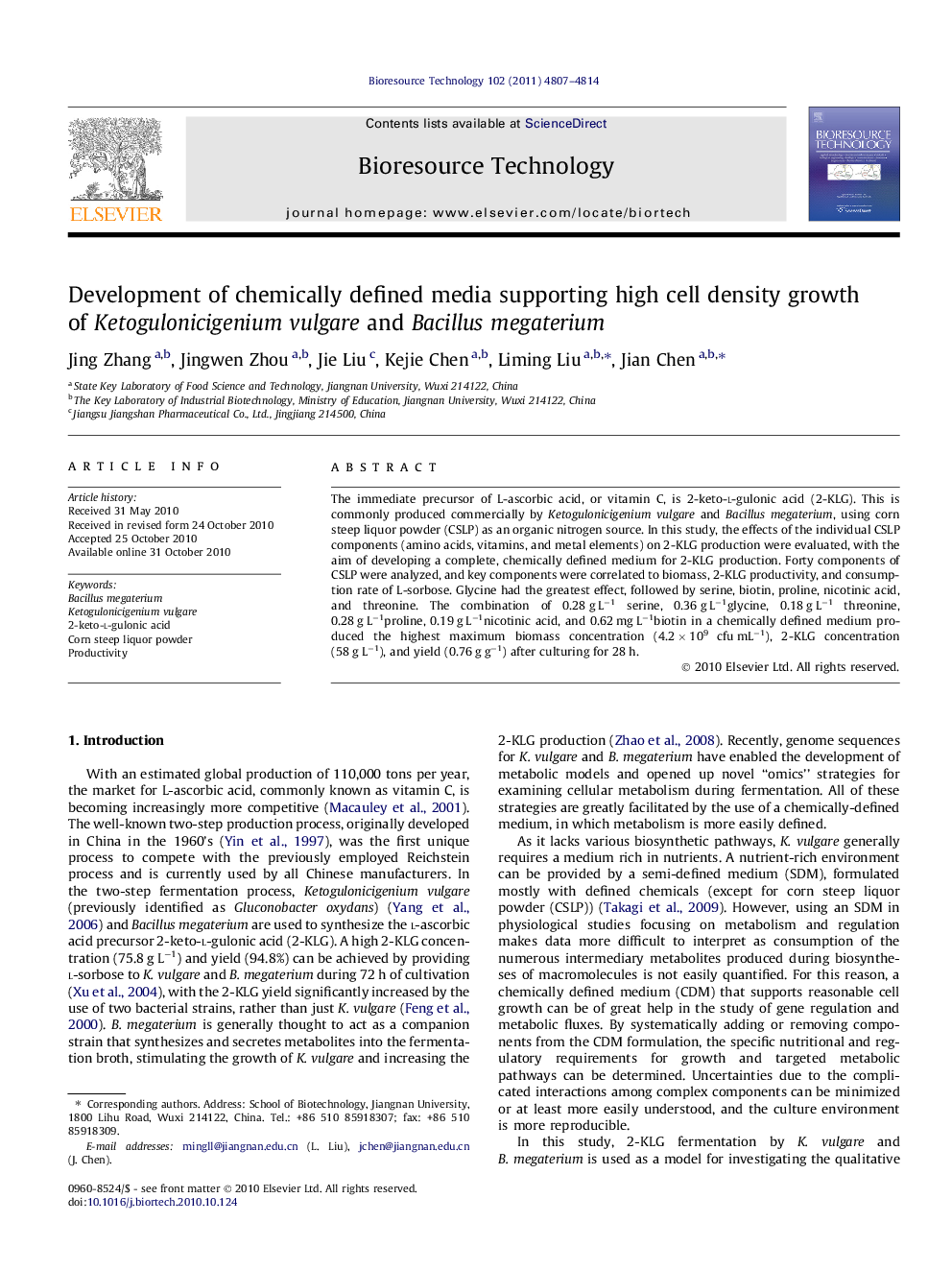| Article ID | Journal | Published Year | Pages | File Type |
|---|---|---|---|---|
| 10395200 | Bioresource Technology | 2011 | 8 Pages |
Abstract
The immediate precursor of L-ascorbic acid, or vitamin C, is 2-keto-l-gulonic acid (2-KLG). This is commonly produced commercially by Ketogulonicigenium vulgare and Bacillus megaterium, using corn steep liquor powder (CSLP) as an organic nitrogen source. In this study, the effects of the individual CSLP components (amino acids, vitamins, and metal elements) on 2-KLG production were evaluated, with the aim of developing a complete, chemically defined medium for 2-KLG production. Forty components of CSLP were analyzed, and key components were correlated to biomass, 2-KLG productivity, and consumption rate of L-sorbose. Glycine had the greatest effect, followed by serine, biotin, proline, nicotinic acid, and threonine. The combination of 0.28 g Lâ1 serine, 0.36 g Lâ1glycine, 0.18 g Lâ1 threonine, 0.28 g Lâ1proline, 0.19 g Lâ1nicotinic acid, and 0.62 mg Lâ1biotin in a chemically defined medium produced the highest maximum biomass concentration (4.2 Ã 109 cfu mLâ1), 2-KLG concentration (58 g Lâ1), and yield (0.76 g gâ1) after culturing for 28 h.
Related Topics
Physical Sciences and Engineering
Chemical Engineering
Process Chemistry and Technology
Authors
Jing Zhang, Jingwen Zhou, Jie Liu, Kejie Chen, Liming Liu, Jian Chen,
